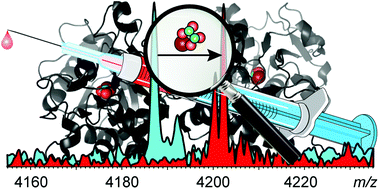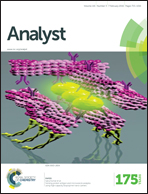Assessing the iron delivery efficacy of transferrin in clinical samples by native electrospray ionization mass spectrometry†
Abstract
Serum transferrin is a key player in iron homeostasis, and its ability to deliver iron to cells via the endosomal pathway critically depends on the presence of carbonate that binds this protein synergistically with ferric ion. Oxalate is another ubiquitous anionic species that can act as a synergistic anion, and in fact its interaction with transferrin is notably stronger compared to carbonate, preventing the protein from releasing the metal in the endosomal environment. While this raises concerns that high oxalate levels in plasma may interfere with iron delivery to tissues, concentration of free oxalate in blood appears to be a poor predictor of impeded availability of iron, as previous studies showed that it cannot displace carbonate from ferro-transferrin on a physiologically relevant time scale under the conditions mimicing plasma. In this work we present a new method that allows different forms of ferro-transferrin (carbonate- vs. oxalate-bound) to be distinguished from each other by removing this protein from plasma without altering the composition of the protein/metal/synergistic anion complexes, and determining their accurate masses using native electrospray ionization mass spectrometry (ESI MS). The new method has been validated using a mixture of recombinant proteins, followed by its application to the analysis of clinical samples of human plasma, demonstrating that native ESI MS can be used in clinical analysis.


 Please wait while we load your content...
Please wait while we load your content...